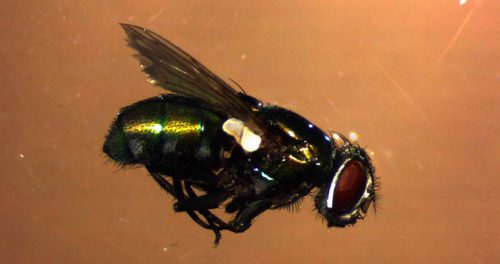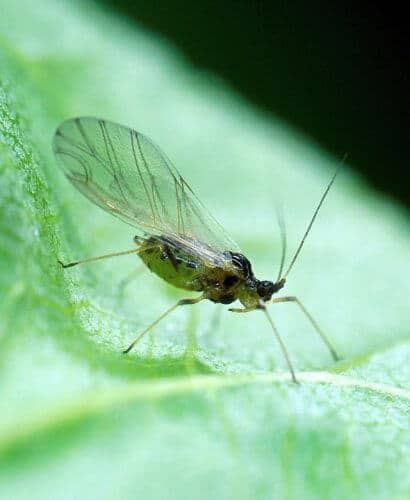Weizmann Institute scientists have located a compound that makes it possible to overcome the resistance of harmful insects to pesticides

Agricultural crops and farm animals around the world are sprayed with thousands of tons of insecticides every year, and these amounts are only increasing as various pests develop resistance to these chemicals. Weizmann Institute of Science scientists, in collaboration with researchers from Australia, have found a way to overcome a common type of resistance to common insecticides. The findings, which were recently reported in the scientific journal "Records of the American Academy of Sciences" (PNAS), may help to significantly reduce the use of insecticides, thereby reducing the pollution of the environment with chemicals and reducing the costs of pest control.
Many of the common insecticides work in a mechanism similar to nerve gas - that is, by disrupting the function of the enzyme acetylcholinesterase (AChE), which plays a central role in the transmission of nerve signals. Accordingly, the resistance that the insects develop to these pesticides usually involves a mutation in one of the enzymes from the AChE family.
One of the insects that has developed resistance to pesticides is the fly Lucilla cuprina which harms sheep in Australia and causes hundreds of millions of dollars in damage every year. Prof. Colin Jackson from the Australian National University deciphered the structure of the enzyme which in its mutant form confers resistance to this fly. Dr. Nir London, from the organic chemistry department of the Weizmann Institute of Science, was present at Prof. Jackson's lecture on the subject, and following it an idea popped up in his mind on how to overcome the resistance mechanism of the fly. For this purpose, Dr. London used an algorithm he developed to detect small molecules that block the activity of an enzyme or any other protein by creating a particularly strong bond with its active site. Dr. London and his research student Daniel Zeidman examined about 23 thousand commercial compounds that include boronic acid, which binds to active sites of proteins from the AChE family. Using the algorithm, the researchers predicted which compounds would bind best to the enzyme that gives the fly resistance, and selected five of the most promising compounds.

Dr. Gaylan Cory from Prof. Jackson's laboratory tested all five compounds selected, and found that they effectively blocked the mutant enzyme. When he deciphered the spatial structure of the compounds after they were bound to the enzyme, he discovered that the structures matched the algorithm's predictions almost perfectly. The scientists used the structures to design additional, even more effective compounds.
After that, the scientists tested the compounds on maggot-stage flies, and discovered that one of the compounds was particularly effective in eliminating the maggots. When the scientists added this compound to a common insecticide, its effectiveness jumped fivefold in non-resistant flies, and in resistant flies the results were even more impressive: adding the compound to the insecticide made it possible to exterminate the resistant flies using 16 times less than the usual amount. "In fact, the compound eliminated the resistance of the flies," says Dr. London.
In experiments by the "Biotransfer" company in France, the compound was also found to be effective against the aphid Myzus persicae which damages potato and peach crops. The compound significantly increased the effectiveness of a common insecticide and helped overcome the resistance developed by the aphid.

Since the compound does not bind to the AChE enzyme in humans, and in laboratory experiments it had almost no effect - or no effect at all - on mice and human cells, even at high concentrations, the researchers estimate that the compound is not toxic to humans and other mammals. "Our approach was found to be effective against two agricultural pests, but it may be effective in killing many other pests," says Dr. London. "The important thing is that it makes it possible to significantly reduce the use of insecticides without harming their effectiveness."
Also participating in the study were Prof. Alon Harmelin from the veterinary resources department of the institute; Dr. Silvia Carvalho from the Israeli National Center for Personalized Medicine named after Nancy and Steven Grand; Dr. Peter Mabbitt from the Australian National University in Canberra; Prof. Peter James of the University of Queensland; Dr. Andrew Kotze of CSIRO, the Australian Scientific and Industrial Research Authority, in Santa Lucia, Australia; and Dr. Vivian Calaura from "BioTransfer" in Monterrey, France.
According to the Food and Agriculture Organization of the United Nations, in 2017, the world used 4,113,591 tons of insecticides.

2 תגובות
Controlling flies in chicken coops is a repetitive operation and not very effective. If there is an effective substance, it will save thousands of tons of pesticides. I would love to know if it will be commercial.
Elad Uri
I am a farmer from a planted plantation growing deciduous plantations 30 years ago I used to spray every 21 days to control pests over the years they lowered materials and some of the materials became less effective so today we spray every week and sometimes twice a week at this rate for many more years we will spray every day and it will not help.
I hope you do well in your research.